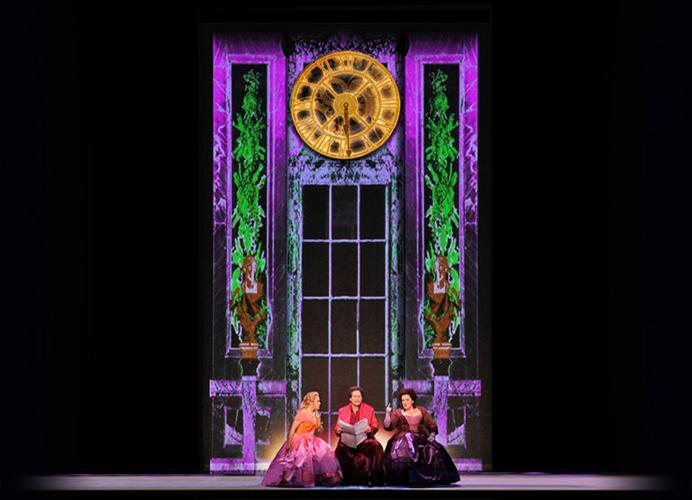Leonard Bernstein must have known from that 1956 premiere that his operetta “Candide” was going to be, in the words of Opera News, his “problem child.”
But as Opera News pointed out in its 2012 review of Portland Opera’s “Candide” production, it was Bernstein’s “brilliant, untidy problem child.”
“The music is glorious, but the story is based on this Voltaire novel that is a wonderful read, but to translate the novel into stage terms and scripts that are coherent and to integrate the music into it, for whatever reason, this piece is challenging,” said stage director Christopher Mattaliano, Portland Opera’s general director who created his company’s 2012 “Candide” production. “But people long to tinker with it because the music is so glorious.”
Among the tinkering: deciding what music to include and what to jettison.
“One cannot perform all of ‘Candide’; it would last four hours,” said Mattaliano, who is bringing his production of “Candide” to Tucson Music Hall with the Arizona Opera this weekend.
Mattaliano’s relationship with “Candide” goes back to 2000, when he created the production that includes projected sets created by Tony Award-winning scenery designer Jerome Sirlin. The brilliant images take us from courtyards, down a pebbled walk, over choppy seas and through forests.
“It’s a multimedia production that allows us to move very quickly from location to location. The sets are just magnificent and literally you can change from place to place in seconds,” Mattaliano explained in a phone call last week from Phoenix, where Arizona Opera is rehearsing for this weekend’s opening at Tucson Music Hall. Performances are Saturday, Jan. 27, and Sunday, Jan. 28, as part of the Tucson Desert Song Festival’s “Bernstein At 100.”
During our chat with Mattaliano, we learned what makes “Candide” — a satirical look at how one man tries to remain optimistic as his world is tossed on its rear — is challenging and wonderful.
First things first: Is “Candide” an opera or music theater piece? “I’m never quite sure how to even answer that question. It’s somewhere between a musical and opera. I would call it more of an operetta, a light opera. It requires real voices; all musicals require singers that can handle tunes, but this has a full orchestra and it has some incredibly difficult and virtuosic music. So you need fully trained operatic voices to make this happen. ... But it has a lot of dialogue and text, so people tend to say it must be a musical because people are speaking and not singing. But then you’ve got a full orchestration and virtuosic vocal music. I guess I’m avoiding the answer to your question. It’s somewhere in between.”
We’ll recognize the overture: “You’ve heard it in a thousand commercials. ‘Glitter and Be Gay,’ the soprano aria, is used a lot. It’s Bernstein so it’s the same composer who wrote ‘West Side Story.’ I think it’s a good piece to stick your toe in the water if you’re considering going to the opera for the first time.”
The evolution from bomb to brilliant: When it premiered in 1956, “Candide” was an abysmal commercial and critical failure despite having big name Broadway talent involved, including Lillian Hellman and Hugh Wheeler. In the years immediately following, other Broadway heavy-hitters including Stephen Sondheim and Richard Wilbur stepped in to add and tweak some of the lyrics, edit some of the action and add text to smooth out the story.
“The piece has evolved over the past 60, 70 years, and every time it’s done it is always slightly different because it depends on what the director and conductor do with it,” Mattaliano said.
“Beloved problem child”: “It’s not like ‘The Marriage of Figaro,’ which is so defined and has been done the same way more or less for a couple centuries now. ‘Candide’ is a unique mess, but it’s a glorious mess.”





